
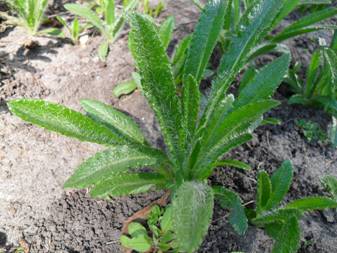

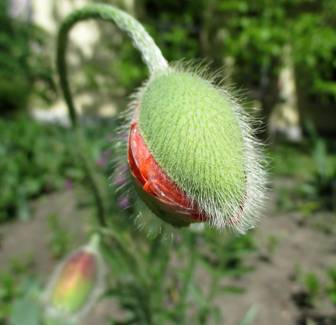
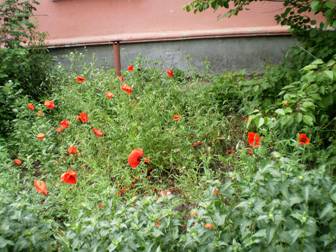

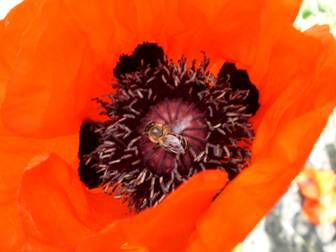



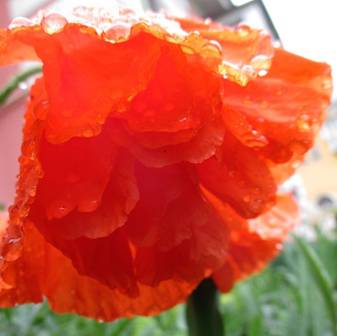
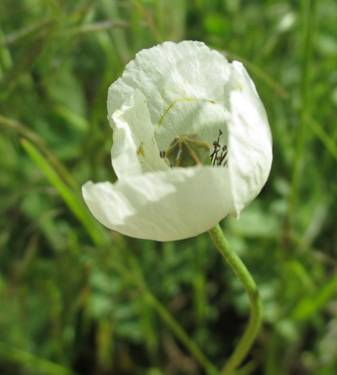
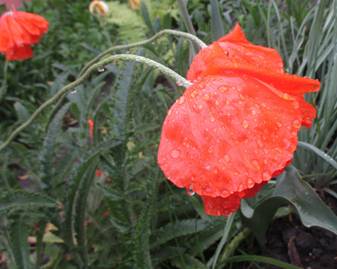
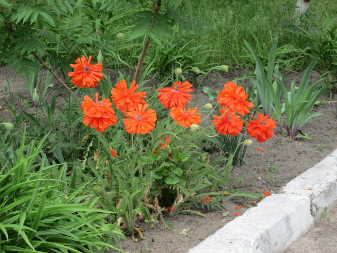
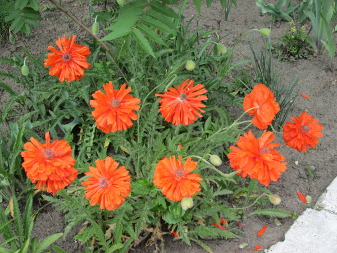
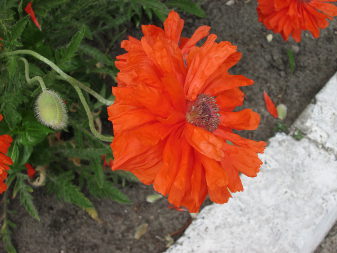
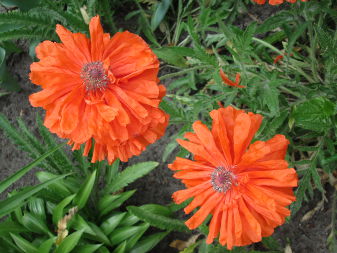
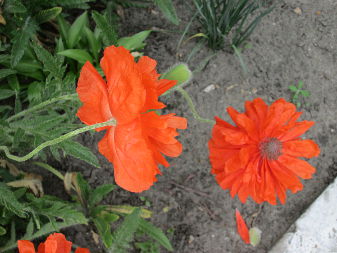
Poppy (Papaver), fam. Papaveraceae.
Both regular and double cultivars are found in garden beds of the city. Also, poppies are often seen along the roads, especially the railways, where they find microclimate close to their native, prairie-type.
It is important to distinguish the common (field, corn) poppy (Papaver rhoeas), and the cultivated opium poppy (Papaver somniferum). The seeds of the former fall away spontaneously when ripe, so they can be gathered only partially, and not considered edible. This species is a typical weed in our fields. The whole plant is moderately toxic, not eaten by cattle, and devoid of narcotic properties.
The second species (Papaver somniferum) is in turn subdivided into oil and opium varieties. The oil varietis are called so due to their seeds, rich in extractable oil, though we mostly meet these seeds in whole state. It is hard to name poppy seeds very beneficial, though they do contain much calcium, zinc, and complete protein.
The alkaloids morphine, codeine, narcotine, narceine, and papaverine, extracted from the latex of opium poppy capsules, are used in medicine. The oil varieties contain trace amounts of these substances. The opium varieties, on the opposite, have thick-wall capsules with lots of latex. A sensitive chemical analysis can detect traces of alkaloids even in the seeds. But their low level allows to sell and consume this product as a food freely, though some countries have periodically banned poppy growing completely, regardless of their variety.
The petals of wild (common) poppy are used in folk medicine mostly as a sedative remedy.